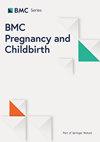根据婴儿喂养方法对产后妇女的睡眠和疲劳进行纵向评估:一项前瞻性观察研究
IF 2.8
2区 医学
Q1 OBSTETRICS & GYNECOLOGY
引用次数: 0
摘要
主观睡眠质量差、抑郁症状和疲劳在产后经常出现。然而,从产前到整个产期,它们各自与婴儿喂养方式的动态关系尚未完全阐明。弗拉芒两家医院的产科使用经过验证的调查问卷,对妊娠 35-37 周和产后 2、8 和 12 周的睡眠质量、失眠、疲劳和抑郁症状进行了前瞻性纵向研究。Somers'd序相关用于调查问卷结果(比率变量)与喂养方法变量(序变量)之间的相关性;T检验(正常数据)或曼-惠特尼检验(非正常数据)用于检验均值是否相等;序回归("比例几率模型")用于研究某一时刻的参数对以后选择喂养方法的预测价值;Logistic回归用于研究参数对以后改变喂养方法的预测价值。共纳入了 188 名在产前(妊娠 27-35 周)表示选择奶瓶或母乳喂养的妇女。通过疲劳严重程度量表(Fatigue Severity Scale)评估,孕晚期疲劳程度较高与选择奶瓶喂养有一定关系。奶瓶喂养的疲劳度在产后早期和晚期有所下降(分别为-0.38 ± 1.04;p = .110和- 0.31 ± 1.01;p = .642),但母乳喂养的疲劳度在孕晚期到产后早期和晚期保持不变(分别为0.04 ± 1.21;p = .110和- 0.27 ± 0.96;p = .642),因此两种喂养方式在产后早期到晚期的疲劳度相似。所有时间点的睡眠质量和失眠症状均无差异。产后抑郁症状的出现与早期改用奶瓶喂养有关(Somers' d相关性为0.11 (p = .021))。疲劳和抑郁症状与母乳喂养的开始或维持成反比,并影响喂养方式的动态变化。本文章由计算机程序翻译,如有差异,请以英文原文为准。
Longitudinal assessment of sleep and fatigue according to baby feeding method in postpartum women: a prospective observational study
Poor subjective sleep quality, depressive symptoms and fatigue occur frequently in postpartum. However, the dynamics of their respective associations from prepartum throughout the maternity period in function of baby feeding method have not been fully elucidated. Prospective, longitudinal study using validated questionnaires probing for sleep quality, insomnia, fatigue and depressive symptoms at 35–37 weeks of gestation and at 2, 8 and 12 weeks postpartum in the obstetric departments of two Flemish hospitals. Somers’d ordinal correlation was used for correlations between the results of questionnaires (ratio variables) and the feeding method variable (an ordinal variable); T tests (normal data) or Mann Whitney (non normal data) tests for equality of means; ordinal regression (‘Proportional odds model’) to investigate the predictive value of parameters at one moment on the feeding method choice at a later moment; logistic regression to investigate the predictive value of parameters on later change of feeding method. 188 women indicating a choice for either bottle or breastfeeding in prepartum (27–35 weeks’ gestation) were included. Higher fatigue assessed through the Fatigue Severity Scale within late pregnancy was moderately associated with primary bottle feeding choice. Fatigue decreased at early and late postpartum in bottle feeding (-0.38 ± 1.04; p = .110 and − 0.31 ± 1.01; p = .642 respectively), but remained unchanged from late pregnancy through early and late postpartum in breastfeeding (0.04 ± 1.21; p = .110 and − 0.27 ± 0.96; p = .642 respectively), resulting in similar fatigue in both feeding methods in early through late postpartum. There were no differences in sleep quality or insomnia symptoms at all time points. Presence of postpartum depressive symptoms were associated with early switching to bottle feeding (Somers’ d correlation 0.11 (p = .021). Fatigue and depressive symptoms are inversely associated with breastfeeding initiation or maintenance and influence feeding method dynamics.
求助全文
通过发布文献求助,成功后即可免费获取论文全文。
去求助
来源期刊

BMC Pregnancy and Childbirth
OBSTETRICS & GYNECOLOGY-
CiteScore
4.90
自引率
6.50%
发文量
845
审稿时长
3-8 weeks
期刊介绍:
BMC Pregnancy & Childbirth is an open access, peer-reviewed journal that considers articles on all aspects of pregnancy and childbirth. The journal welcomes submissions on the biomedical aspects of pregnancy, breastfeeding, labor, maternal health, maternity care, trends and sociological aspects of pregnancy and childbirth.
 求助内容:
求助内容: 应助结果提醒方式:
应助结果提醒方式:


